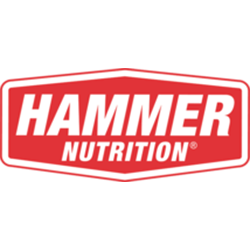Why do we take the Lactate Threshold test? What does that number represent and what do you do with it to actually be a better bike racer? The test function is meant for defining the lactate or anaerobic threshold heart rate (both terms can be used. I will stick to using lactate threshold for consistence in terminology). The Conconi test (named after professor Conconi from Ferrara, Italy) is a simple method used for measuring the approximate values of each individual’s maximum, aerobic and aerobic threshold rates. His method of lactic aid exertion testing produces the curve you see on the diagrams that can be used for defining the threshold. Conconi plots the graph of heart rate versus speed. The test you take on a Computrainer or SRM type machine is creating a hear rate versus watts diagram with gradually increasing watts and heart rate. The use of heart rate in defining these points has proved to be a reliable method for getting comparable results assuming that the tests are conducted in a controlled and exact manner.
I would like to start with some definitions of the terms we use.
Lactate Acid: A by-product of the lactic acid system resulting from the incomplete breakdown of glucose (sugar) in the production of energy. Up to the Lactate Threshold you are using both glycogen and oxygen. But once you go into an anaerobic state, your muscles are no longer receiving oxygen fast enough to convert the fat into energy. Your muscles run off the stored glycogen, but the by-product of this is lactic acid. As the lactic acid builds up, you start to feel fatigued and the burn in your leg muscles. The lactic acid keeps the muscles from destroying themselves, slowing you down. Anaerobic threshold training can help you extend the point at which you go into an anaerobic state. This means you can ride harder before you go into oxygen debt, get tired, and eventually “blow-up”.
Lactate: formed when lactic acid from the muscles gives off a hydrogen atom on entering the blood stream.
Lactate Threshold (LT): The point during exercise of increasing intensity at which blood lactate begins to accumulate above resting levels. This is also known as the anaerobic threshold (AT). During cycling, you can perform up to certain intensity without accumulating lactic aid in the blood. When intensity is exceeded, lactic acid levels rise, glycogen becomes rapidly depleted from the muscles, and performance declines. Lactate threshold training increases your body’s ability to take in oxygen which increases your body’s ability to ride hard before going into oxygen debt.
Power: is composed of strength and speed, and the formula for calculating it is to multiply force by distance and divide by time.
Strength: may be defined as the force that a muscle or a muscle group can exert in one maximal contraction. Muscular endurance is significantly related to maximum strength. If you train to increase your strength, then muscular endurance will increase. I.e. any cyclist’s start or jump.
Max Watts: is the measure of how much power you can generate at 100% effort. The more power you have the easier it is to move your mass. You want to measure max watts as you train to make sure it doesn’t diminish as you increase your endurance and strength.
Average Watts: How long you can sustain and endure high output. This is a better measure of increasing fitness for an endurance athlete. Not just how much you can push at max, but how long can you hold a high average amount of watts.
Watts at Lactate Threshold: The watts or power that you can generate at your lactate threshold is a good indicator of your performance. You should be able to maintain this output for four or more minutes beyond LT in the test. This number is generally low in the winter because we are not training this system and should increase over the next quarterly tests as your fitness and performance intensifies for racing.
Power to Weight ratio: How many watts per pound of energy you can generate. The higher the ratio the more efficient you are. There are only two variables that can change your power to weight ratio. 1. Increase your power or 2. Lower your body weight or both.
Time: Measure of how quickly you can generate the power.
ATP-CP: The energy for muscular contraction is derived from ATP. When a muscle contraction occurs (i.e. while pedaling), the stored of ATP are broken down to produce other compounds (ADP + P + energy <Adenosine Diphosphate plus phosphate plus energy>) and energy. However, these ATP stores are quickly depleted, and another compound phosphocreatine (PC) is broken down resulting in energy release. This energy can combine with ADP to resynthesize ATP for additional energy for muscular contraction.
Aerobic System: The aerobic system utilizes oxygen and fat as its primary source for energy production. This system is used the majority of time when intensity is kept below 72% of maximum heart rate. The aerobic system goes through more than 20 steps within the muscle cell before ATP is produced. For this reason, the aerobic system is a slower producer of ATP during exercise. However, this system produces a greater amount of ATP. Training can improve delivery of oxygen to the muscles by carrying more oxygen with in the blood as well as improving your muscles ability to extract more oxygen delivered to working muscles. This form of training is very important as it increases muscle enzyme utilization, fuel efficiency and aerobic function which accounts for greatest volume of training undertaken. (In other words, this is why you do major amounts of endurance steady paced training to get ready for the intensity later when racing. There are no short cuts to training this system).
Anaerobic Power: The other type of anaerobic system is the lactic acid system. This system uses muscle glycogen (stored carbohydrate) and the blood glucose as fuel to ATP. This system accounts for most of the energy generated in all-out efforts of approximately 30 seconds to several minutes. This system derives its name from the accumulation of lactic acid in the body. Once the ATP-PC system has been exhausted, your muscles can continue to produce ATP anaerobically through the release of food energy, i.e., glucose. In this system, carbohydrate is broken down without oxygen; the end product is lactic acid. Training this system will allow you to increase your ability to produce energy in an anaerobic state. This type of training is very demanding and should not be confused with anaerobic capacity training.
Anaerobic Capacity: Anaerobic capacity training is actually training beyond the aerobic point, the point where your body supplies oxygen to the muscles. So anaerobic interval training is with very limited recovery between efforts.
VO2 Max: This is your rate of oxygen delivery to your muscles. Researchers can measure how much oxygen is used, or consumed, by your body as it makes energy. This is done in a laboratory with equipment that analyzes the volume and composition of your expired air. We can subtract the amount of oxygen that you exhale to calculate how much oxygen was used by your body to make energy. VO2 stands for the volume of oxygen consumed per minute.
Training Zones (Z): Zones are the percentages based off the Lactate Threshold which is determined during the Computrainer or SRM test. Instead of saying zone 3 is one particular number like the lactate threshold we use these zones because your HR fluctuates due to a variety of reasons (temp, time of day, tiredness). This allows for the fluctuation of the actual LT as well.
Z1 = 65%-81% Recovery
Z2 = 82%-88% Aerobic
Z3 = 89%-93% Tempo
Z4 = 94%-100% Subthreshold
Max = Maximum Effort—go until you blow up!!! (like in a final sprint)
Power Test Comparison Tables
From Joe Friel, “The Cyclist’s Training Bible”
| Max Power vs. Average Power Ranges | |||||||
|---|---|---|---|---|---|---|---|
| Senior Men | Senior Women | Master Men | |||||
| Ranking | Max | Average | Max | Average | Max | Average | |
| Excellent | 950+ | 665+ | 760+ | 530+ | 800+ | 560+ | |
| Good | 800-950 | 560-665 | 650-760 | 450-530 | 680-800 | 475-560 | |
| Average | 650-800 | 455-560 | 520-640 | 360-450 | 550-680 | 385-475 | |
| Fair | 500-650 | 350-455 | 400-520 | 280-360 | 425-550 | 300-385 | |
| Power to Weight Ranges | ||
|---|---|---|
| Ranking | Senior men/wm | Master Men |
| Excellent | 6.0+ | 5.0+ |
| Good | 5.0-5.9 | 4.0-4.9 |
| Average | 4.0-4.9 | 3.0-3.9 |
| Fair | 3.0-3.9 | 2.0-2.9 |
The Lactate Threshold Test is taken to measure fitness, locate and identify your breaking point between aerobic and anaerobic systems and to then use this information to build your training program. The zones are used to create a training program to build each of the aerobic and anaerobic systems. The proper interval training method will enable you to be more effective in processing and efficiently using glycogen (sugar) as an energy source (improving your anaerobic capacity).














